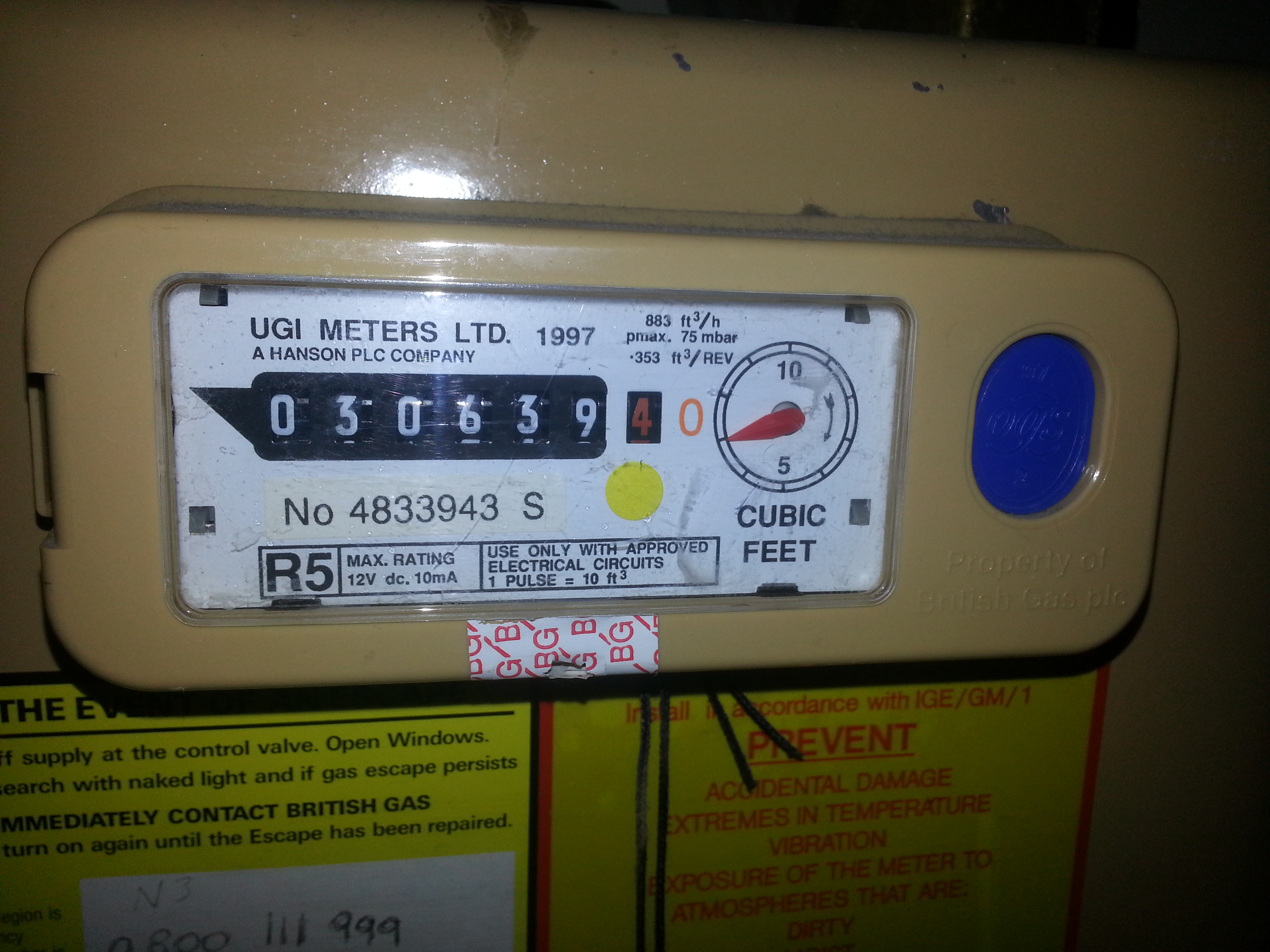Getting meter readings#
Energy metering is really the only way to get a handle on where energy is going, useful for assessing whether changes are working and whether there are problems controlling energy use in the building. They are also useful for estimating the energy costs associated with different kinds of events in the building and predicting future financial requirements. You might have several meters, for instance, with separate electricity meters for different parts of the building.
In this session you want to do three things.
Find all your meters and take a photo. The photo is partly so you can look up whether it’s a smart meter or is so old it should be changed. You also need it to be very sure what units the gas meter is in, critical for understanding how much you could save through changes and predicting what your gas bills we be when a fixed term tariff ends. You should also note down what you think each meter covers.
Reading meters and getting kWh

Fig. 1 It’s very important to know whether gas meters are imperial (in ft3) or metric (in m3) and how to transform that into kW.#
Meters can be hard to read properly, especially older ones. For electricity, there may be separate readings for day rates and night rates. Without access to past bills, it may not be obvious how many meters there are, whether any are submeters, and what areas they serve. Even just taking photos of the meters with the current readings will be an achievement for many groups. The meter reading might be obvious when the group comes together at the end of the session, or it might be that some group member needs to take the photo away and figure out what the photo means.
Agree how to get meter readings. Ideally, you will take record them weekly at around the same time.
Recording meter readings
The group will want to get readings into a spreadsheet somehow and convert usage into kWh. We’ve prepared a template you can use for this.
Here are some ways groups get readings:
Access smart meter records. Smart meters take readings every 30 minutes - this is very useful information for finding waste. Some utility companies let the account holder see or download the data. If they don’t give access to the data, your meter might be compatible with the Loop app, which retrieves the data from source on your behalf.
Take smartphone photos of the energy meters. Because these are automatically dated and timestamped, they provide all the information you need, and sometimes there is someone (not necessarily a member of the group!) who passes the meter regularly enough that getting the photos and uploading them to something like Google Drive isn’t a hassle. The information still needs to be read off the photos, but that isn’t very time-consuming.
Use a meter log book placed next to the meter.- a pen and paper approach - recording the date, time, and reading.
Entering meter readings directly into the Google Spreadsheet.
Discuss whether past energy use data is available and worth finding. This can be very helpful for knowing whether changes are actually helping, as long as you can separate them out from other changes that might confuse you, like an increase in room hires. Many groups will have no past information. Some groups may have recently done carbon footprint baseline measurement so have some information to hand. Since 2014, energy suppliers have been required by law to give historical information about annual consumption if customers ask (The Electricity and Gas (Billing) Regulations 2014) so this will be on one of the year’s bills, but beware - if meter access is difficult, the meter readings could almost all be estimated, making them of little use.
